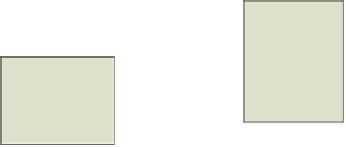Information Technology Reference
In-Depth Information
(a)
wind
WIND
Wm
Wind input
For
MLP controle
r
WIND TURBINE
Control signal
pitch angle
Pcap
MLP
CONTROLER
(b)
wind
WIND
Wind input
For
MLP controller
Wm
WIND TURBINE
Control signal
pitch angle
Pcap
RBF
CONTROLER
Determination
Center
Fig. 3 Block diagram of controllers. a MLP controller diagram. b RBF controller diagram
where
y
i
is the desired output vector of the ith neuron in the output layer and yi
i
the
calculated output vector of the ith neuron in the output layer by using (
13
).
Update the weights by using Eq. (
15
).
Calculate the total error
^
according to (
16
).
Iterate the calculation by returning to Step 2 until the total error is less than the
desired error.
“e
T
”
W
ij
n
þ
ð
1
Þ¼
W
ij
ðÞþae
i
ðÞ
F
j
u
;
c
; r
ð
Þ;
ð
i
¼
1
;
2
; ...;
L
;
j
¼
1
;
2
; ...;
H
Þ
ð
15
Þ
where n is the iteration and
a
the learning rate
X
X
I
N
M
2
e
T
¼
y
nj
y
nj
ð
17
Þ
n
¼
1
j
¼
1
According to Fig.
3
a the MLP controller in this paper has two inputs (wind speed
and output power) and one output (pitch angle value). At
first this controller is
trained with credible optimal values of wind turbine input-output (Kasiri et al.
2011b
,
2012b
).
Therefore this approach procures the best weight between input output using
desired error produces. The training of NN computes an appropriate pitch angle
upon catch wind speed. There are
five neurons in the hidden layer. The hidden layer
has nonlinear activation functions, but the output layer has a linear one.
The RBF neural network controller has three inputs and one output. Figure
3
b
shows block diagram of RBF controller (Kasiri et al.
2012b
). Similar to previous
controller at
first this controller is trained with full credible rang optimal value of















































Search WWH ::

Custom Search